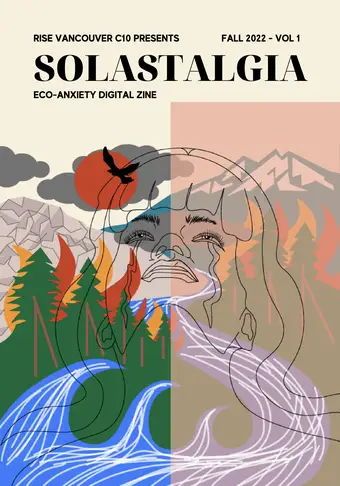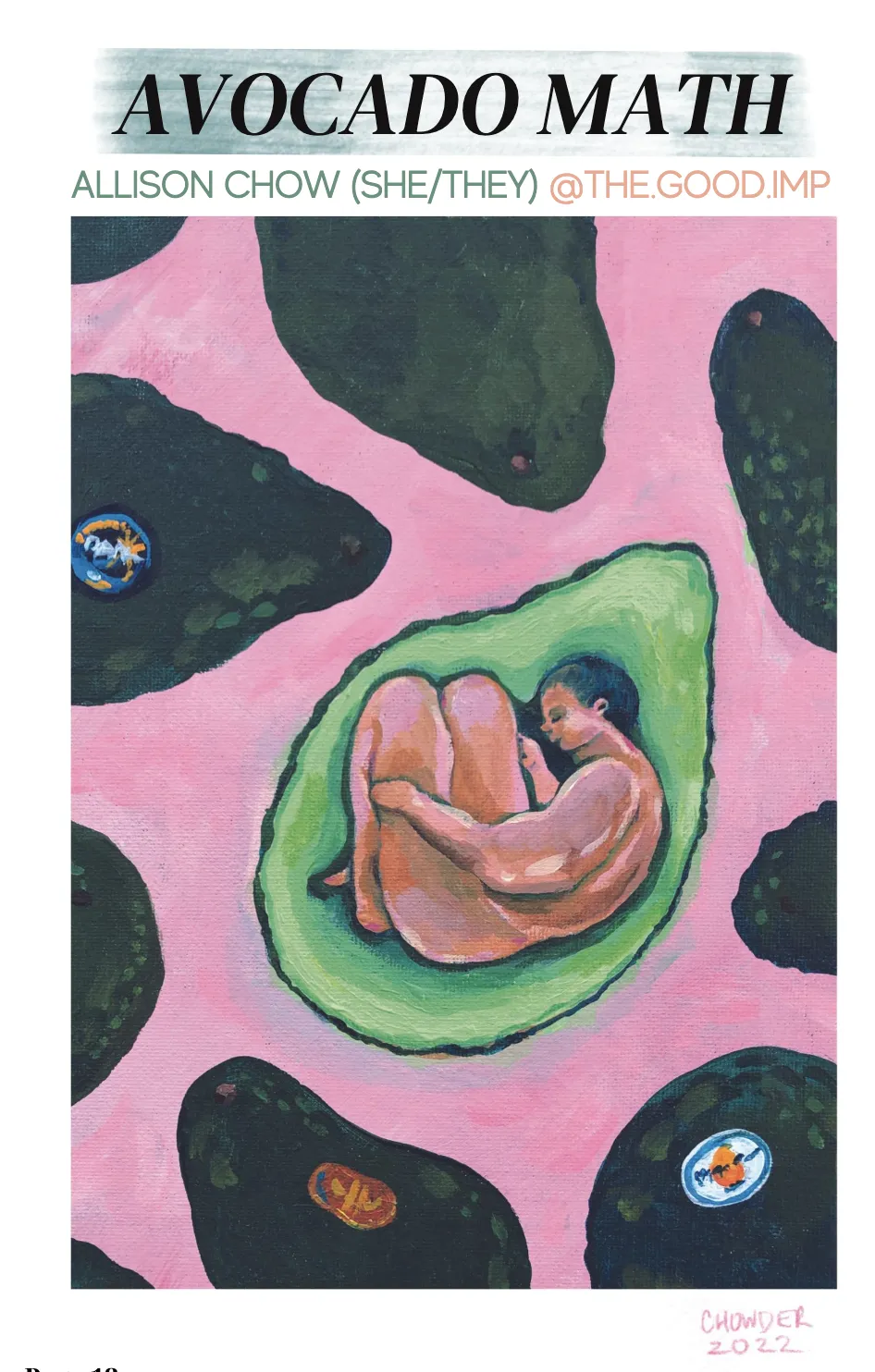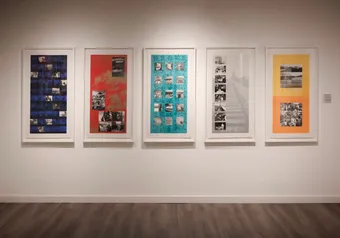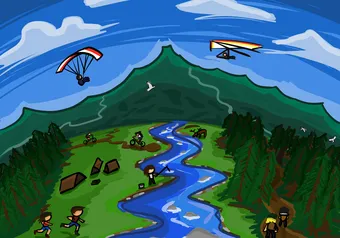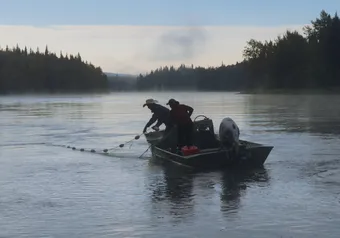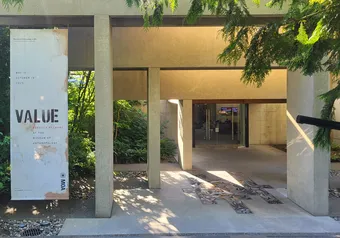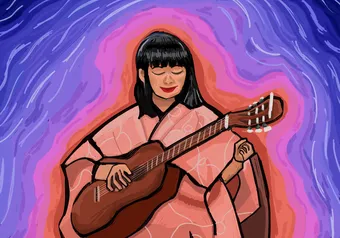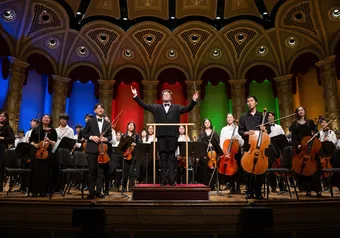I used to love when it snowed. Snowflakes, all unique from one another, would form into snow people or balls thrown at my friends. It was always exciting to wake up to. But now, as every inch that falls freezes the city into a dangerous gridlock of iced-shut SkyTrains and grounded flights, it’s bittersweet — Vancouver is not ready for extreme weather events, which will grow more frequent with the climate crisis.
The devastating emotional impacts of climate change can be described in one word: Solastalgia. Apathy is Boring, a youth empowerment program put on by RISE Vancouver with the Canadian Service Corps, created a zine with artwork from those aged 18 to 30 residing in BC that showcased their experience with the eco-emotion solastalgia.
What is solastalgia?
Renmart Buhay, a lead research assistant at UBC’s emergency medicine department and one of the zine’s designers, said that for him, solastalgia is the feeling of familiar touchstones disappearing as the climate irrevocably changes.
He described it as “being in your own home or environment and … seeing things change for the worse.” It’s a “homesick feeling while still at home.”
Luiza Teixeria, a fourth-year international relations student and a member of the zine’s communications eam, views solastalgia as a sense of nostalgia for something that hasn’t yet been lost, but which is eroding before our eyes.
“I think of it in terms of the Greek root -algia, which is kind of like emotions and also ties it to nostalgia,” said Teixeria, “It’s like a pre-feeling of nostalgia and knowing that in the future, I will not have this and already feeling these feelings of missing it.”
Art as a canvas for activism
When developing the zine, the team at Apathy is Boring drew on the theme of "resilient cities," and decided to focus on eco-anxiety. They then hosted a community conversation for BC youth over Zoom to discuss eco-anxiety and emotions related to climate change.
Buhay said that the community conversation solidified the idea for a zine by demonstrating a gap: there is a lack of safe and productive spaces to process the emotional impacts of climate change.
The zine format combines text, images and other forms of art such as songs and poetry. The zine includes artist statements to help the reader empathize with the artist’s intentions.
“As oftentimes people might get overwhelmed or not interested in more factual-based or stats-based communication, I'm proud of being able to make a visually-friendly piece that engages people in conversation,” said Buhay.
“We think about eco-anxiety as a range of emotions, so we didn't really want to limit [submissions] to one specific thing like, only anger or sadness, so I feel like the artists had a really big opening to explain what kind of emotions they feel from solastalgia,” said Teixeria.
Zine contribution "Avocado Math” by Allison Chow incorporates an element of guilt into her portrayal of solastalgia. It’s a painting of several avocados, with a person curled up inside of one. The figure is insulated within the gleaming green fruit, but also trapped by it — scrunched into a ball of anxiety and choice-paralysis. This piece highlights the pressure that individuals can feel to make ecologically-friendly choices in a market that Chow’s artist statement entertainingly describes as “green-washed up the wazoo.”
Of course, the choice to avocado or not to avocado means little compared to the emissions of corporations or national militaries. Either way, grief over our favourite foods disappearing from the shelves or becoming more expensive is a constant.
The front page of the zine is the face of a person looking up in tears as their environment behind them is destroyed: the forest burns, the sun is red and the water rises. Buhay created the cover art for the zine to communicate the overarching idea of human bodies, emotions and our environments as inseparable.
“I wanted to showcase a youth letting out emotions with the background of a BC landscape environment to showcase that interconnection between person and planet.”
The zine launch party on December 4 gave space for attendees to process their own experiences of solastalgia and hear a reading from one of the contributing poets.
“One person even attended our event and they gave me the feedback that they really appreciated this project and they felt really seen and they just really enjoyed the experience overall,” said Teixeria, “Our main hope was to raise awareness that [solastalgia] exists and create a sense of belonging within our communities, specifically here in BC, and I’m really happy to believe that we did achieve that at least a little.”
First online
Share this article


